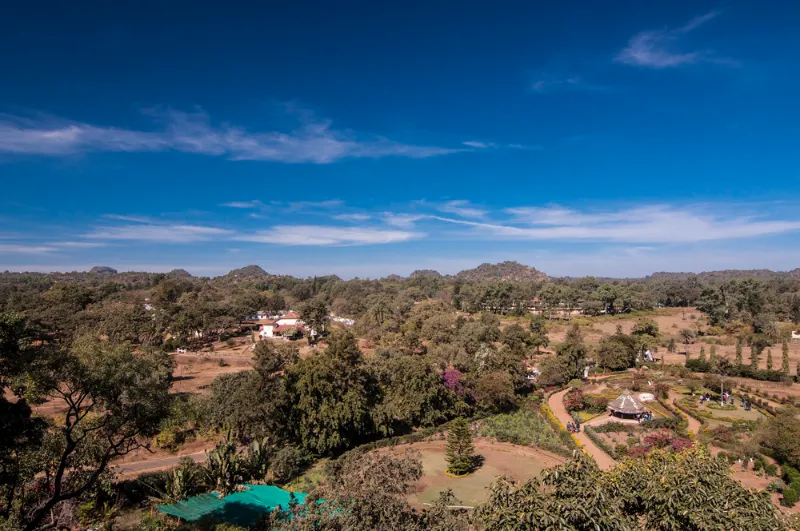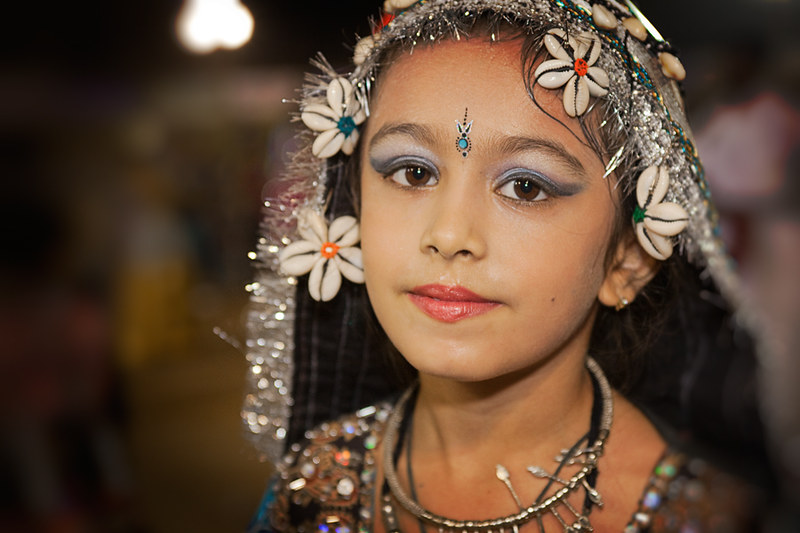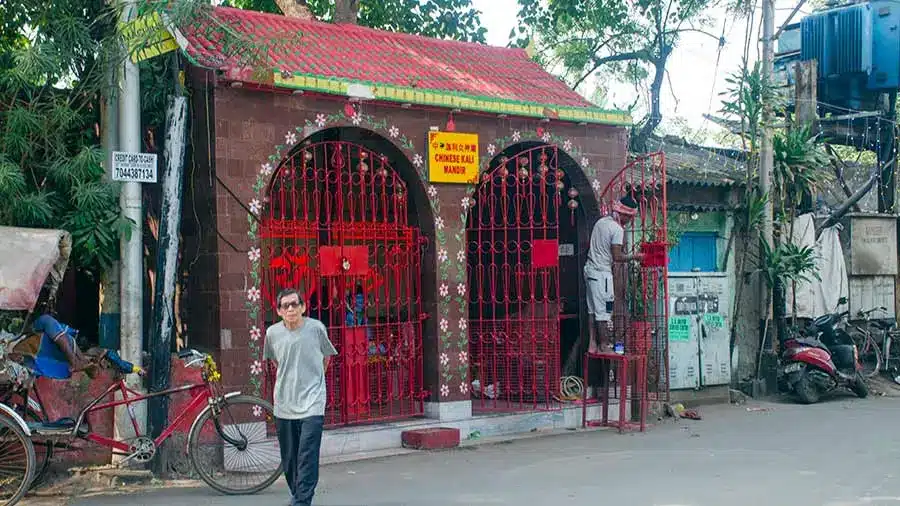One of Pune’s must-visit places, Aga Khan Palace in Kalyani Nagar stands today to narrate the tale of generosity, kindness, and a few pages from the history of the Indian freedom struggle. This mighty edifice was constructed by Sultan Muhammed Shah Aga Khan III in the year 1892 to employ the villagers in the famine-struck areas surrounding Pune. Around 1,000 workers were involved in the construction of the palace for five years. However, this building is more famously associated with common knowledge as the place where Mahatma Gandhi and his wife were under house arrest.
Standing tall on 19 acres of land, this magnificent monument has witnessed significant events from India’s freedom struggle. Hence, this rightly places Aga Khan Palace as the third feature on our series, Freedom to Travel. The series aims at educating the reader on the lesser-known locations that were instrumental during the Indian Freedom struggle. You can find the other articles in the series here.
The History Attached to the Aga Khan Palace
The first president of the All India Muslim League, Sultan Muhammed Shah Aga Khan III, took it upon himself to provide relief to the villagers affected by the famine. He ordered the construction of a palace that cost him 1.2 million at that time. Today Aga Khan Palace stands on a well-maintained garden with its elegant Italian arches, five halls, and large verandas.
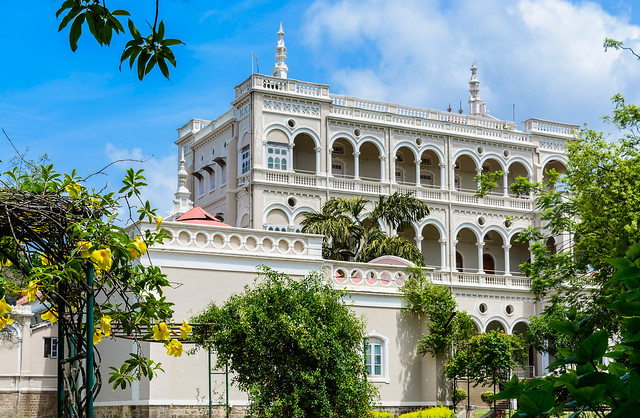
However, the place assumed national importance when Mahatma Gandhi, along with his wife Kasturba Gandhi and few of his staunch followers, were imprisoned here soon after the launch of the Quit India Movement. Gandhi and others were brought to this mansion under the Defence of India Rules on 8 August 1942 and were imprisoned here for almost two years before being released on 6 May 1944.
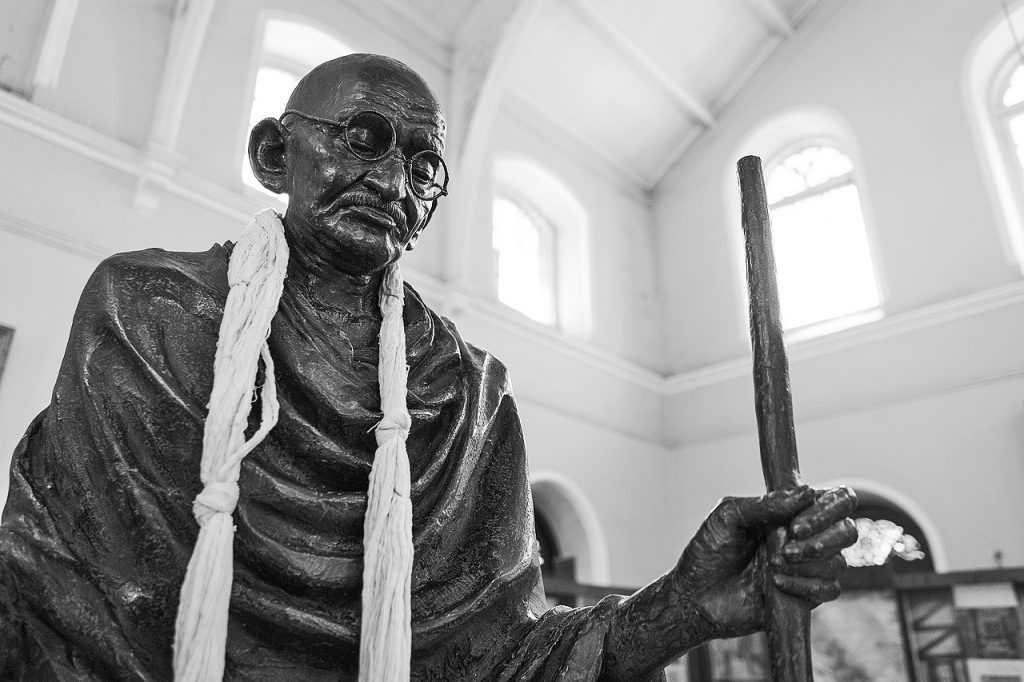
It was here that Mahadev Desai and Kasturba Gandhi breathed their last within the palace’s premises. The celebrated architect Charles Correa built their samadhis and placed them inside the mansion, which are now monuments of national importance. One of the other reasons why Aga Khan Palace finds a mention in India’s history is because it was indeed here that Mahatma Gandhi hoisted the earlier version of the Indian Flag on 26 January 1943 as well as 1944.
The Halls
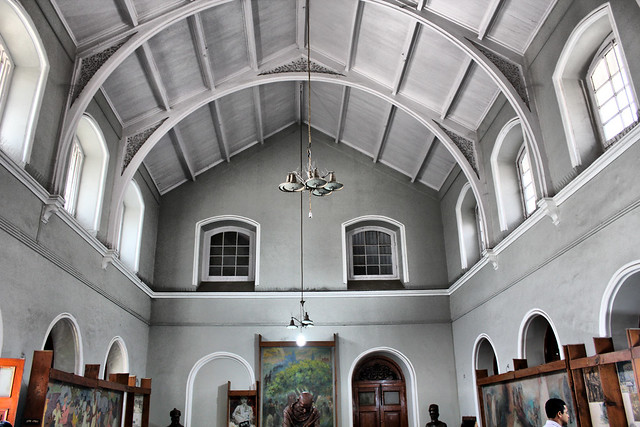
The architecture of Aga Khan Palace is a mix of Indo-Saracenic and European styles and today stands to narrate the tales from the five large halls wherein Gandhiji and his fellow freedom fighters resided during the house arrest.
First Hall – As you enter this hall, two life-size statues of Mahatma Gandhi and Kasturba Gandhi greet you along with busts of other freedom fighters, and several paintings depicting the different stages of the freedom struggle.
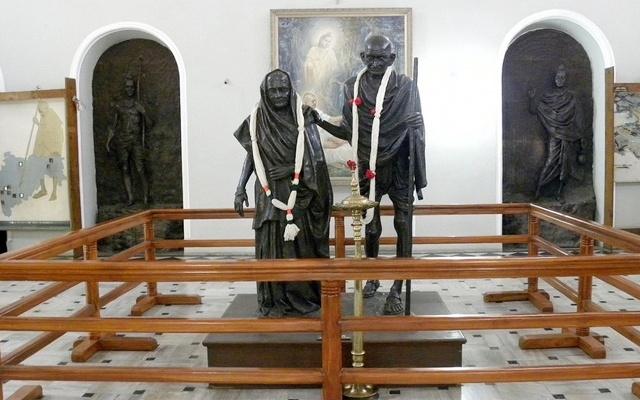
Second Hall – The second hall depicts Gandhi’s philosophy of “Unto the Last”. Deeply inspired by John Ruskin’s book Unto This Last, he developed a philosophy of “Antyodaya” or the “uplift of all” which is reflected in the statue of Gandhi lifting a kid.
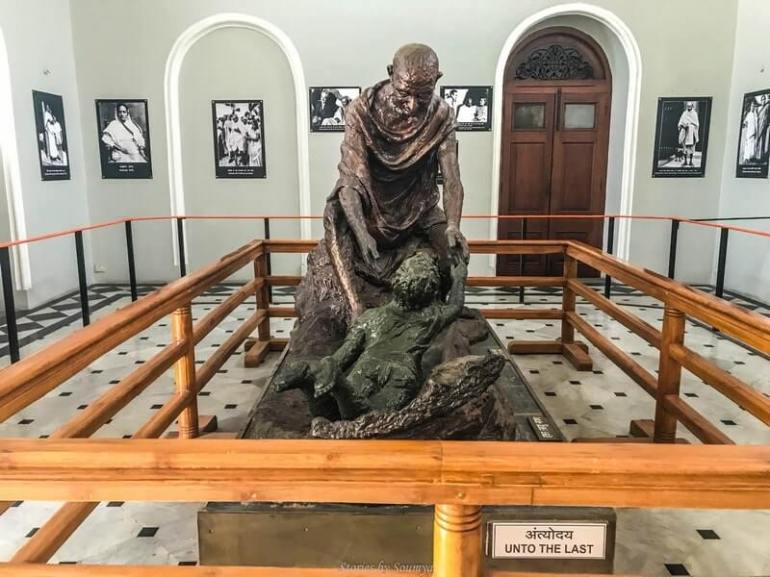
Third Hall – Sarojini Naidu used this hall during the house arrest. A round table occupies the center of the room, and the walls of this hall display painting, photographs, and news clippings from the pre-independence era. You will also find portraits of Aga Khan III and IV to your right when you enter the room.
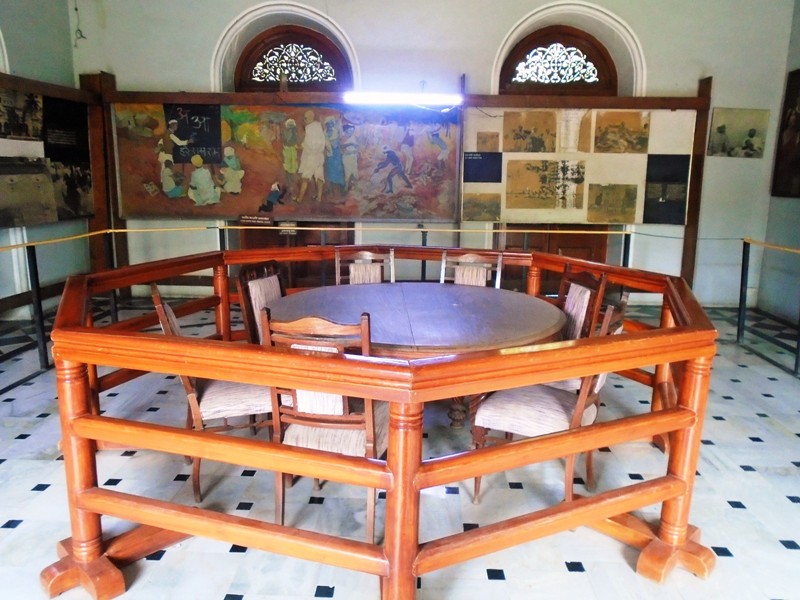
Fourth Hall – The fourth hall housed Mahadev Desai, who passed away within a few days of his arrest. A big wooden board hangs on the wall, which has spelled the circumstances leading to Mahadev Desai’s death, along with articles used by Gandhi and Kasturba Gandhi. One of the rooms in the fourth also housed Gandhi and his wife. It was also here that Kasturba Gandhi breathed her last. Although not open to the public, the fifth hall has portraits of Gandhi and his wife as well as their personal belongings, which are visible through the glass door blocking the entrance.
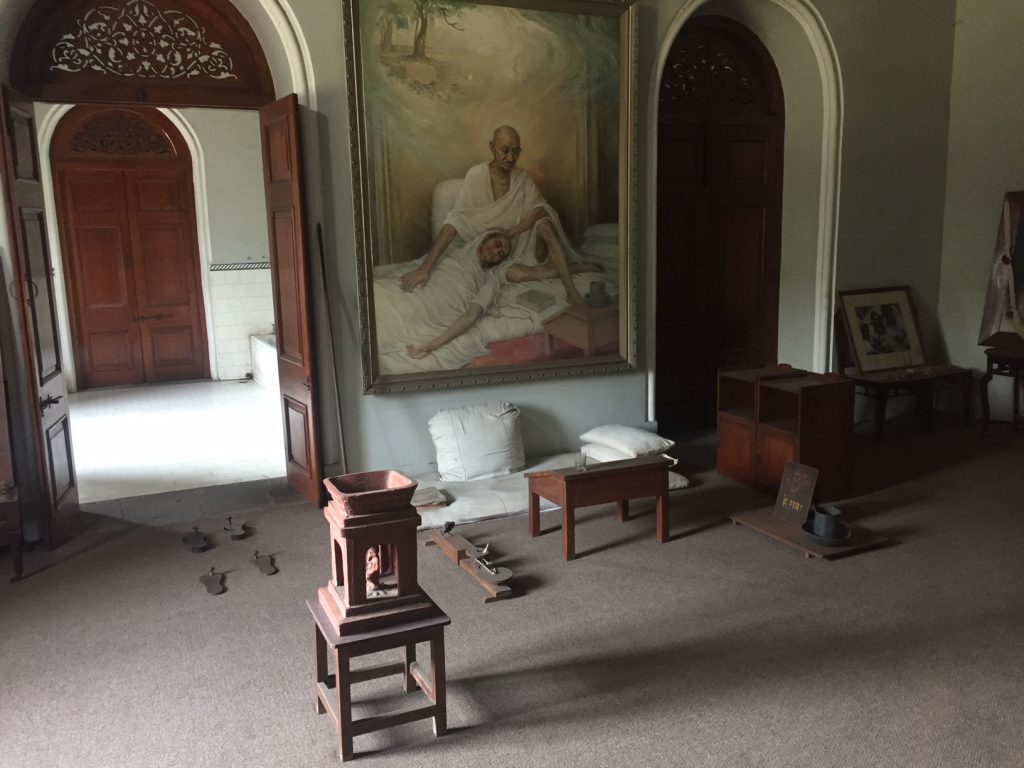
Fifth Hall – The fifth hall served as the office of Dr. Gilder and Shree Pyarelal Nayyar. This hall is also not open to the public.
[Also read: Places to visit near Mumbai by road]
Samadhis
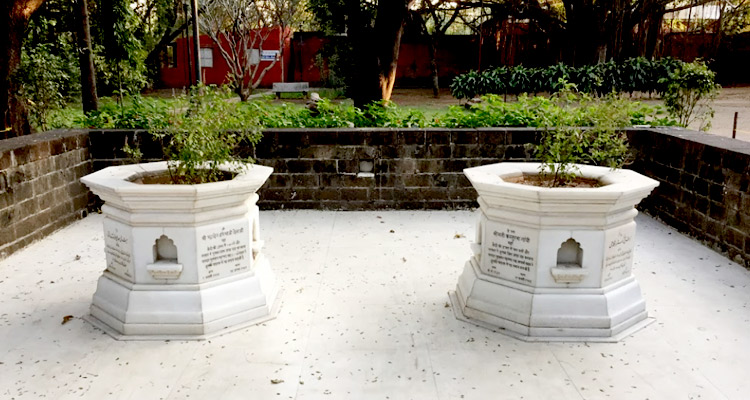
Once you have taken a good tour of the halls, you can take the steps at the end of the corridor and walk into a garden that leads to the Samadhi or the place where both Kasturba and Mahadev Desai are entombed. To the right of these tombs, lies the ashes of Gandhi in a separate tomb. While Gandhiji was cremated at Raj Ghat in New Delhi, his ashes are said to have been donated in 1992 and have been housed here since then.
Present Day Aga Khan Palace, Pune
Today, the Aga Khan Palace is the headquarters of the Gandhi National Memorial Society. There is a shop inside the premises of the national monument where clothing made of handloom textiles and khadi are sold as mementos. Khadi making is still one of the main activities carried out at the palace.
However, not just a symbol of Indian independence, Aga Khan Palace photo shoots are quite popular among young newly married couples who come here for their pre-wedding or post-wedding shoots. And the architecture of the Agha Khan Palace humbly explains why.
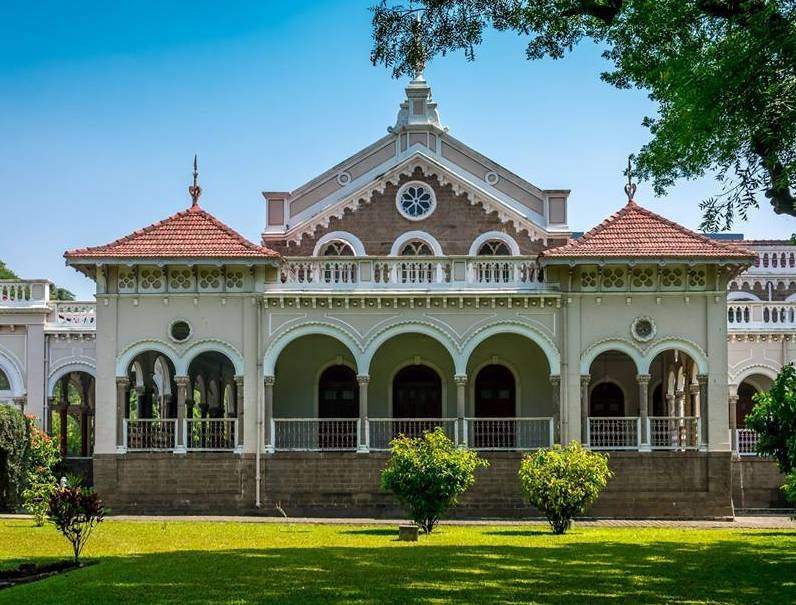
If and when you do visit the Aga Khan Palace, do join the prayer sessions that are held at Gandhiji’s Samadhi every morning. A large number of people attend the prayer session and it is quite a remarkable experience before you begin a tour of the palace.
On Gandhi Jayanti, the footfall is double with people coming in from different corners of the world to pay respect to the Father of the Nation. The palace also hosts a Martyrs Day every 30th January in memory of the freedom fighters who gave their lives to free us from the Raj.
Aga Khan Palace timings are from 9 am to 5.30 pm throughout the week, except on national holidays. The entry fee of Aga Khan Palace is INR 25 for Indians and INR 300 for foreign nationals.
How to reach Aga Khan Palace
Aga Khan Palace is located 14 km from the railway station and about 10 km from the International airport. One can hire a safe, sanitized cab on rent for a full-day tour from any part of Pune. For those traveling from the airport, you can book a taxi right outside the airport and travel straight to the monument.
Standing tall with a legacy of more than 125 years, the elegant Aga Khan Palace in Pune stands as a testament to generosity, history, and architecture. At the same time, its role in the country’s freedom struggle makes it one of the most significant landmarks in India’s history.
Savaari has drafted a comprehensive report on the Travel and Mobility trends in India in the context of the COVID pandemic. The information presented in the report will help you make an informed judgement on how Car Rentals have emerged as the safest and affordable mode of transport during these unprecedented times.
Last Updated on October 20, 2022 by blogadmin



